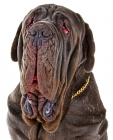Neapolitan Mastiff
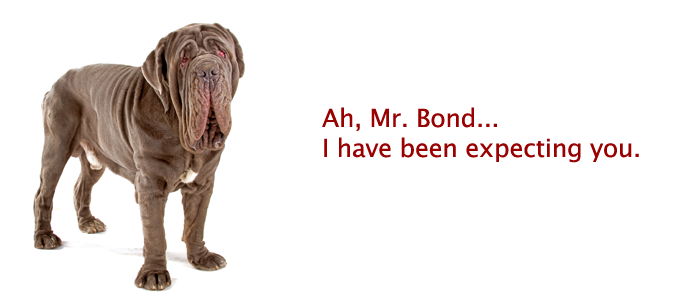
In my own words
I, the “ king of droolers” the giant guard dog of Italy, masters of my ancestors include Alexander the Great who I helped conquer the Roman empire over 3000 years ago. My great great cousins were used in battle and in arena combat, fighting bears and even lions. We even helped fight the great wars. Today though I have developed into a gentle giant that protects both person and property and serves as a loyal family companion. My most notable feature must be my appearance; some may say terrifying in sheer size, my wrinkles and my slobbering jaw. I walk like a bear and trot like a lion and definitely have a propensity to snore…loudly! But given the chance and the right up bringing I will offer you unconditional love and loyalty and follow you all over the house, never one to stray. One must say although slightly aloof at times, with my noble expression and majestic bearing I’m always vigilant and a dependable kind making me one of the best watch dogs around.
My ideal owner(s)
Active Singles
Families with older children
Experienced dog handlers
Dominant owners
Calm
Loving
What they say about me
Steady
Calm
Loyal
Devoted
Slightly aloof
Powerful
Intelligent
Massive
Wrinkly
Sensitive
Watchful
Is this Neapolitan Mastiff for you?
Test your knowledge about the Neapolitan Mastiff
Information essential about the Neapolitan Mastiff
Breed Group – Working
SIZE
Height: Dogs: 26 to 31 inches, Bitches: 24 to 29 inches. Average weight of mature Dogs: 150 pounds; Bitches: 110 pounds;
Popularity:
As a unique breed and we must understand clearly one thing: the Neapolitan Mastiff is not like any other breed of dog, it's not alike in type, it's not alike in build, it's not alike in movement, it's not alike in terms of temperament or character.
While the Neapolitan Mastiff has been recognized as a breed in the modern world only since recognition by the FCI in 1949, we can see, through bas-relief, paintings and statues dating from 3000 years before Christ, that his roots trace to the giant war dogs of Egypt, Persia, Mesopotamia and Asia. Even as grand a figure as Alexander the Great (356-323 BC) was instrumental in creating the modern Neapolitan Mastiff.
Breed History:
An ancient breed, the Neapolitan Mastiff's lineage can be traced back to ancient Egypt, Persia, Mesopotamia and Asia - to the dogs of war used by the Roman army. The breed later existed on estates and farms in northern Italy, designed to be imposing in appearance for use as a defender of owner and property. Even Alexander The Great admired the strength of these dogs and brought them to his kingdom in Greece and helped create the Mastiff we have today. With the Tibetan Mastiff acting as the primal source for them all, is hard to say, but it is certain that throughout the ancient civilisations, the forebears of the Neapolitan Mastiff were highly valued fighting dogs of the early courts, palaces and warrior leaders, they fought anything, guarded everything and, in suitable armour, even went to war. When the Romans conquered Greece, they adopted the Molossus Dogs and also used them in battle, in the hunt and in the arena. The Roman invasion of England gave them access to the even larger giant Mastiff dogs there, which the Romans crossed with their own now formidable war beasts. The several different breeds that are descended from these dogs originating in many different European countries, have many traits in common: they are large powerful animals, are devoted to their masters, and are superior defenders of person and property.
Character:
Steady and solid as an oak tree, the Neo is a guardian rather than an attack dog. He's always alert and aware, even if it looks like he's relaxing. If you aren't home, they simply won't let anyone onto your property. And really, who's going to argue with them? The Neapolitan Mastiff should be even tempered, loyal, vigilant, intelligent and slightly aloof. The movement is an important characteristic which could be compared to the motion of large mammals, when pacing the Neapolitan moves like a bear, and when trotting he moves like a lion. Neapolitan Mastiffs are not attack dogs and should never be trained to be so. When you welcome someone, though, your Neo will accept that person as well, although he'll probably remain aloof. This isn't a "hail fellow, well met" kind of dog. The Neo is affectionate toward his family, but he's also strong-willed--and big enough to have his own way. Whist they move in a slow, lumbered fashion and can strike fear into the hearts of passers-by, but they are really big babies with hearts of gold. Not to put it past them though as they are fiercely protective of the ones they love, but generally they are giant love bugs wanting nothing more than a cuddle. Making the deepest bonds with their favourite people, they are both loving and patient as well with older children
Temperament:
The Neapolitan Mastiff is steady and loyal to his owner, not aggressive or apt to bite without reason. Problems arise when the other dog’s postures back. Mastinos are not fight starters, but they will not back down if challenged. As a protector of his property and owners, he is always watchful and does not relish intrusion by strangers into his personal space. His attitude is calm yet wary. In the show ring he is majestic and powerful, but not showy. While his appearance is unnerving, looks are deceiving. The Neo, as he's often nicknamed, has a reputation for being an affectionate 200-pound lap dog. He is a constant guardian with an intimidating stare that he directs toward strangers, but he's far from being a fighting dog. Steady and loyal, his primary goal is to be with his people. He'll defend them with ferocity if need be
Conformation:
Neapolitan Mastiffs are a rare purebred that originated near Naples and descend directly from the Tibetan Mastiff, the king of all the mastiff dogs.
The Neapolitan Mastiff is an estate guard dog from Italy. The breed traces its roots to the dogs of war used by the Roman Army. The breed then existed on estates and farms across Italy for the past two millennia, known as the "big dog of the little man" -- the extraordinary dog of the ordinary man.
Large and powerful, Neapolitan Mastiffs are known for their massiveness - massive head, massive bone, and massive body. Despite their fierce appearance and serious demeanor, Mastini are generally peaceful, steady dogs. The breed's trademark is the loose skin that covers their bodies, the abundant wrinkles and folds on the head and their rolling and lumbering gait. Their short coats can by gray (blue), black, mahogany and tawny. Traits that make the Mastino an unusual dog: its wrinkles, dewlap, loose skin, enormous bone, and distinct lumbering gait, are created by an accumulation of recessive genes. To breed a sound dog with these attributes is truly an art...and a challenge.
Colour:
Solid coats of gray (blue), black, mahogany and tawny
Training:
Begin training early, be firm and consistent, and use positive reinforcement techniques, such as praise and food rewards. As with every dog, Neapolitan Mastiffs need early socialization or exposure to many different people, sights, sounds, and experiences. This can’t be neglected due to the sheer size of the dog. Socialization helps ensure that your Neo puppy grows up to be a well-rounded dog. Start training your Neo as soon as you bring him home, while he's still at a manageable size. The Neo is headstrong and needs a confident trainer. Never physical punishment, but be firm and consistent in what you ask of him.
Think beyond puppyhood. If you don't want your Neo on the furniture when he weighs 200 pounds, don't let him on it when he only weighs 20 pounds. Once a habit is established, it will be difficult to break. Neo’s can be quite challenging to train, so lessons should begin as early as possible. This giant breed can exhibit dominance, so firm, calm-assertive leadership is a must at all times.
The Neapolitan Mastiff is not recommended for a timid or first-time owner. This breed needs a confident trainer who is consistent and firm but also loving. The Neo is strong-willed and will test whether you really mean what you say.
Care:
Neapolitan Mastiffs love the outdoors, but they also love being with their family. They should live indoors with their people, not alone in the backyard. Young Neapolitan Mastiffs are rowdy, but it's important for their orthopedic development to prevent a lot of jumping or stair climbing until they reach physical maturity. Neapolitan Mastiffs can be destructive if bored. Give them regular exercise, social interaction, and training to keep life interesting. Neapolitan Mastiffs don't make great jogging companions and are usually happiest when curled up on the couch. But don’t let this become a regular thing as they can become lazy and put on weight. An adult Neo will benefit from a couple of short to moderate daily walks, however. He's sensitive to heat and humidity, so schedule walks for cool mornings and evenings, and be sure he always has a cool place to rest and plenty of fresh water.
The Neo's face is made up of heavy, velvety wrinkles and folds that extend from the outside margin of the eyelids to the dewlap, Cleaning and keep the wrinkles dry is an important part of grooming this breed. The Neo sheds about as much as the average dog. Weekly brushing with a bristle brush or hound glove will keep his coat clean and free of loose or dead hair.
The average lifespan of a Neapolitan Mastiff is approximately 7 years, although we all know of dogs that have lived to 9 or 11 years. As with all large breeds, there can be health problems that can occur during the optimum growing period, so a controlled diet is essential.
Health:
Neapolitan Mastiffs are generally healthy, but like all breeds, they can be subject to certain health conditions. Not all Neos will get any or all of these diseases, but it's important to be aware of them if you're considering this breed. Some of the major ones include hip dysplasia, which is a hereditary condition in which the thighbone doesn’t fit snugly into the hip joint. This can develop into arthritis with old age. Another common one with the larger breeds is elbow dysplasia and cardiomyopathy, which is a heart condition that can occur when the heart muscle becomes very thin and is unable to contract normally. The other common problems are cherry eye and cleft palate.
You may also like:
If you like Neapolitan Mastiffs, you may be interested in breeds of the same size »
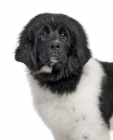
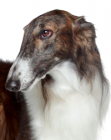
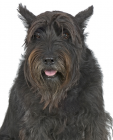
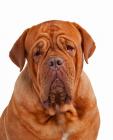
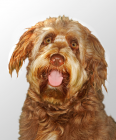
If you like Neapolitan Mastiffs, you may like other breeds with similar characteristics »
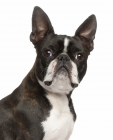

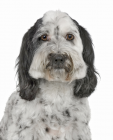
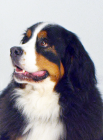

If you like Neapolitan Mastiffs, you may be interested in these other working dogs »

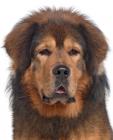


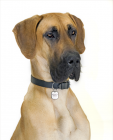
Advice on choosing your breed »
Find an animal shelter or rescue home where a Neapolitan Mastiff is waiting for a new home »
Owning a Neapolitan Mastiff can be the beginning of a wonderful relationship with hopefully many years of happiness. However, it could also be the beginning of an overwhelming responsibility, which you need to make sure you are prepared for!
Neapolitan Mastiffs are high maintenance, time consuming, smelly, slobbery and because of their size, are constantly under your feet! Neapolitans are also devoted, loving, loyal, charismatic companions, gentle giants with their family, fearful foe to the intruder. Neapolitans are generally very good with children especially if raised with them but, they can be a bit clumsy and at times excitable, so great care should be taken around babies and toddlers
Well-bred and socialized Mastiff’s are steady and loyal to their own families but protective around strangers. Due to the breed’s size, strength and temperament, experts do not recommend a Neapolitan Mastiff for first-time dog owners or families with young children.
Their short coats are easy to care for, but potential owners should not be afraid of a little drool! Neos aren't especially suited for life in an apartment or condo unless they have room to sprawl. Otherwise, they're likely to shove your furniture out of place or knock objects over in their attempts to find a comfortable resting spot. When it comes to living with a Neo, neat freaks need not apply. The Neo drools after eating or drinking or when he's nervous, and he's notorious for passing gas. Keep a small hand towel for wipeups and a can of air freshener nearby at all times. On the plus side, he's a quiet dog who rarely barks.
Neapolitan Mastiffs make wonderful companions; they are not dogs that should be left to their own devices outside or chained-up all day long. They are loving animals that thrive on human companionship.
Be the first to rate this breed »
|
*PLEASE NOTE: All our breed profiles are general, and all dogs are individuals. Always talk to the breeders and meet the owners you are buying from. Try to meet the dog and its parents if it is a puppy in their home environment.








